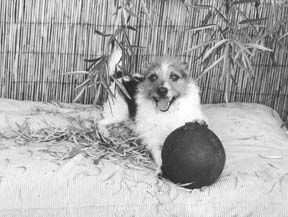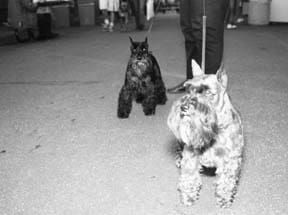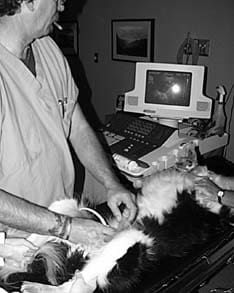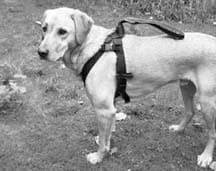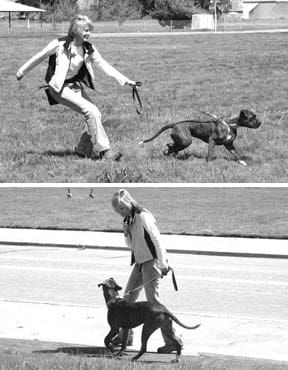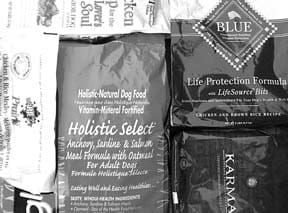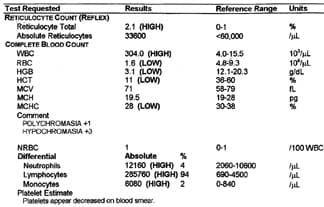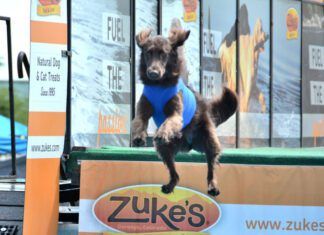by Mardi Richmond
Dogs and gardens just naturally go together for me. I like to be outside with my dogs, them playing, me gardening, the birds singing. I enjoy watching my dogs running through the grass, lying on the patio in the afternoon sun, or exploring the scents left by visiting raccoons.
I’m not the only one who thinks dogs and gardens go well together. Cheryl S. Smith is the author of a great new book, Dog Friendly Gardens, Garden Friendly Dogs. She grew up with the commingling of gardens and dogs, and currently shares her home and garden with two dogs. “It never occurred to me that you couldn’t have dogs and gardens together,” she says.
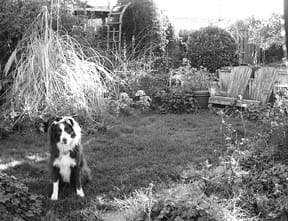
But a surprising number of people do see a problem with dogs in the garden, and for some very good reasons. With their digging, chewing, and even those annoying yellow spots on the grass, dogs at best can create extra work for gardeners. At worst, a bored or destructive dog can turn a beautiful oasis into a disaster area in a surprisingly short amount of time.
The garden can pose a host of dangers for the dog, too. Too often, the result is that the dog is simply banned from the family garden area, relinquished to a dog run or side yard. But it doesn’t have to be that way!
In fact, one of the reasons Smith wrote Dog Friendly Gardens, Garden Friendly Dogs was because she wanted both garden fanciers who happen to own a dog and dog lovers who have a garden to know that there doesn’t have to be a conflict between the dog and the plants. By keeping the dog’s needs in mind (as well as the needs of people, plants, and wildlife), your dog and garden really can coexist quite happily. By taking it a step further and incorporating special features just for the dog, you can enjoy your garden to the fullest, and enable your outdoor space to enrich your dog’s life!
Getting started
Whether you are starting with a new garden or revamping an already existing garden, taking the time to develop a design or plan that incorporates your dog’s needs can save you a lot of grief. Exactly how do you incorporate your dog’s needs into a garden plan? Begin, as with any garden design, by identifying how the yard is used – in this case, how your dog uses it.
“As far as actual design goes, you should consider how you and your dog will use the yard,” says Smith. For example, a dog will want to be able to get from the exit door to a good vantage point in a hurry – say, from the kitchen door to that tree where the squirrel lives – and will take the most direct route there. Planting a bed of fragile flowers in the middle of that route will only lead to bad feelings, she suggests.
Observe the paths your dogs take when they cruise the yard. Notice where they like to plop down and relax. Is your yard one of the main places your dog gets exercise? Make sure space for running and playing is part of your design. Plan for a potty area, consider where you might need mud control, and if your dog spends more than just a little time outside, don’t forget about shade or shelter from the elements.
You need to consider specifically how your dog may impact the space in his or her garden romps. Every dog brings his or her unique needs. If you have a rowdy dog, you may need to eliminate fragile plants (or devise a way to protect them) and plan for more open romping space. If you have a dog that insists on laying in the one sunny spot in the yard, you may want to think twice about putting your prize tomatoes in that very place.
One of my dogs loves nothing more than to nap in the shade. When I first planted the shady area in my yard, I forgot to consider Blue’s napping habits and put a Calla Lily in her favorite spot. Before I could clean off my shovel, she plopped down on my new plant, squashing its bloom. I could have battled with Blue (though she likely would have won) over her choice of napping spots. Instead, I opted to relocate the Calla Lily elsewhere and fill in the area with Baby Tears. The shade bed both looks great and provides a cushioned bed for my arthritic dog.
Now that you’ve thought about your dogs’ needs, look at what you would like to do in your garden. Do you want to entertain guests? Do you like to hang out quietly and read a good book? Do you enjoy tending to plants or growing vegetables? The more you enjoy your garden, the more time you’re likely to spend outside with your dog.
Of course, you may find places where your wants and needs conflict with your dogs’. Then what? “Compromise, compromise, compromise,” says Smith. “If you take the time to learn the basics of how the dog uses the landscape, and design around that, at least to some degree, you can avoid a lot of problems.”
Adding dog-friendly features
In addition to how your dog already uses the landscape, consider what additional features you would to like add. What can you include that will enhance your dog’s garden experience? Smith recommends creating a dog’s “wish list.” Would you and your dog enjoy a place to practice your agility moves? How about a place to toss the ball or play tug together? Would you like to provide your dog with a wading pool for hot summer days? How about a place for the dog to dig where he won’t get yelled at?
“Wish list” items will vary from dog to dog, and garden to garden. Smith notes that when her dogs, Diamond and Nestle, were younger, they really enjoyed having a digging pit. But they seem to have outgrown it. Now, her dogs’ seem to enjoy the large shady area where they can lie in the grass and observe their surroundings. Nestle also enjoys splashing in the pond.
Of course, you may not be able to include everything on your dog’s wish list; not all of us have the space for an agility yard, wading pool, digging pit, patio for entertaining, large shade tree, swing set for the kids, etc. You may have to choose between the dog and people enriching options. Consider including one or two of your dogs’ favorite activities, however. Not only will your dog friends appreciate it, but that wading pool or digging pit can give you a place to focus your dogs’ energy so that they are less likely to trample your roses or snack on your baby carrots.
Choosing plants and materials
Some of the primary considerations for the dog-friendly garden include the safety and comfort of the dog and the protection of the plants. Choosing dog-friendly landscaping plants and other materials can greatly impact both.
For example, incorporating a garden path where your dog naturally runs is a great idea. But, if you use a material on the path that is painful to your dog’s paws, she may run through your plants in spite of your best efforts. For example, small smooth gravel can make an excellent path. Substrates that are uncomfortable on your dog’s pads, such as larger gravel or lava rock, may force her off the path and into the plants.
There are more options for plants and landscaping materials than I could possibly list in this article, and plenty of general gardening books to give you ideas. But some options are tried and true when it comes to landscaping with dogs in mind. Consider your “hardscapes” – the structures, paths, patios, and other nonplant elements in the garden. Cement and stone patios, wood or composite decks, and crushed granite pathways are all options that hold up well under tough dog use. Mulches can provide a nice alternative, especially shredded cedar or small bark chips. Smith includes a detailed chart of the various mulch options along with dog use pros and cons in her book.
Please note that the very popular cocoa mulch (currently being sold in higher end garden centers as “designer” mulch) should be avoided in the dog-friendly garden. It contains theobromine, the same chemical found in chocolate that is poisonous to dogs. Cocoa mulch smells like chocolate and is toxic if eaten.
Be aware of poisonous plants, too. Some very common garden plants, including Morning Glories and Foxglove, can be very toxic to dogs. While most dogs don’t gobble up plants indiscriminately, some dogs and many puppies will put everything in their mouths. Choosing nontoxic plants and supervising your dog or puppy can help you avoid serious problems. The ASPCA Animal Poison Control Center provides an extensive list of both toxic and nontoxic plants on its Web site at www.aspca.org.
Choosing plants that will be durable around dogs is also an essential aspect of the dog-friendly garden. Some shrubs, like rosemary, lavender, and Mexican sage, do very well in our garden. The dogs can brush against the plants without doing much damage. If they do damage these shrubs, they recover quickly. And, as my friend Lisa points out, when dogs run through the rosemary or lavender, they end up smelling great too!
Certain ground covers also hold up well under dog use. We’ve had good luck with ornamental strawberries and thyme (though dog urine does damage the thyme). I have a gardener acquaintance who is currently experimenting with the ground cover “cape weed” (Arctotheca calendula) in heavy dog use areas. This particular ground cover is not only drought tolerant and very durable, but also damage from toenails and digging seems to actually stimulate growth. In addition, it can be mowed to keep it flat (as a lawn alternative), or left to grow in a clumping fashion where it sprouts yellow flowers throughout the growing season. (Warning: Cape weed grows very much like an out of control weed. It will spread and take over other ground covers and lawn areas if it is not controlled.)
Lawns, you probably know, are a mixed bag with dogs. Our dogs love to romp through the grass, but they also wear “trails” along their favorite paths, leave yellow urine marks, and dig after (but never catch!) our ever-present gophers. We’ve opted for a combination of solutions and compromises, including discouraging the gophers (and thus the digging) and regular reseeding.
Protect your plants and wildlife, too!
The location of your plants can have an impact not only on overall appearance, but also on their durability. For example, planting in dense groupings or clumps can help create a sort of “barrier” that many dogs will naturally go around, especially if you leave paths around and behind the groupings.
Distinctive planting beds – either raised beds or bordered beds – can create natural boundaries that many dogs will easily learn to stay out of. Using a decorative border fencing, if needed, can help enforce the boundaries. Putting particularly fragile plants in pots is another good option.
Consider your dog’s temperament and inclinations about wildlife, too. I love to watch birds, so I want a garden that attracts them. I’ve opted to skip the backyard feeders because one of my dogs likes to hunt. Feeders, which drop seeds on the ground, encourage birds and other small creatures to hang out at the dog’s level. Instead, we’ve planted a slew of flowers that attract hummingbirds, and we leave the fruit and nuts on the top branches of the trees for the songbirds and squirrels. This way, I get to birdwatch without encouraging the animals to come into an unsafe space.
Garden manners
Dogs are smart. They learn to follow our rules fairly easily. Consider the “house rules” you’ve implemented with your dog. They probably include things like not peeing inside, staying off certain furniture, or even out of certain rooms. Dogs can just as easily learn garden rules and good manners.
For example, if you’d like your dog to stay out of your tomato plants (a good idea both because the dog can damage the plants, and the plants can be toxic to dogs), you can teach your dog to respect the boundary of that particular area of the yard. Keep in mind that teaching your dog to stay out of certain areas will be easier if there is a clear delineation (such as a raised bed or border) and you are consistent in your training. This will mean taking the time to teach your dog where the boundary is, and that he or she is not allowed past the boundary. Plus, of course, offering lots of attention and rewards when your dog respects the boundary.
Along with boundary training, Smith suggests training your dog to use a specific potty area if you would like to avoid urine spots on the lawn.
Training a dog to use a specific potty area is similar to housetraining a new puppy. Simply take your dog to the “legal” potty area at regularly scheduled times (like first thing in the morning, after meals, and after play), give your potty cue, and praise or treat the dog for following through. Most adult dogs can learn to use a specific area with a week or two of training, though regular “refresher” exercises can help them keep it up long term.
In addition, Smith suggests incorporating training exercises into your other gardening activities. “You can practice your long down with the dog nearby while you work in the garden,” Smith offers as an example, “then have a play session with the dog as a reward.” You’ll not only work extra training into your day, but also teach dogs that the garden is another place where you would like them to follow your rules.
Digging and destruction
Let’s face it. One of the biggest arguments against having dogs in the garden is that they will destroy plants and landscaping. Many dogs are relegated to a dog run because they dig, chew, or otherwise demolish yards if given the opportunity. And, as you probably know, dogs can do a lot of damage to a garden in a short amount of time. So how can you deal with destructive behavior in the garden? Consider the following approach:
• First, give your dog a legal outlet for her destructive behavior. If your dog digs, for example, build a digging area complete with sand and a distinctive border. Teach your dog that digging in this area is not only OK, but encouraged. If your dog chews, provide him with a safe chewing alternative. If your dog tears around smashing into plants, make sure he gets plenty of off-leash exercise at the dog park.
• Supervise your dog in the garden until he or she learns the “rules.” Unsupervised time that results in destructive behavior will make it much harder for your dog to learn not to be destructive.
• Teach your dog what is okay. Teach her what specific activities are allowed (like running and playing) and where those activities are allowed, by going outside and playing with her!
• Make sure your dog has enough exercise and stimulation. You’ve heard it a million times: A tired dog is a good dog. If my dogs have not had enough exercise, attention, and brain stimulation, they are much more likely to get into trouble in the yard.
In addition, keep in mind that certain behaviors are natural and may be very difficult to train a dog not to do. Consider dogs digging after gophers or moles (especially if your dog is a terrier!). In my opinion, this is an almost impossible behavior to train a dog not to do. You can redirect the digging behavior; try burying stuffed Kongs in the digging pit. But in the case of a diehard gopher hunter, the best option is to eliminate the gophers. Or, if you are like me, and unwilling to do harm to the gophers, keep a bucket of top soil and grass seed available to “repair” the inevitable holes.
Do it for the dog!
You’ve probably figured out by now that there are several approaches to dogs in the garden. There is the “dog-proof” approach that most often means planting only dog-durable and dog-safe plants or delegating the dog to a dog run. There is the “dog-friendly” approach, where the goal is for both plants and dogs to coexist, and involves a combination of planning and training.
But I’d like to encourage you to take the concept of dogs in the garden a step farther. Really think about your garden as being as much for your dog as for you and the plants. Ask yourself, what can your garden do for your dog? How can the garden space enrich his life? This can be especially important for our city dogs! Most importantly, how can you enjoy your garden space together?
Remember that designing with your dog in mind will ultimately result in a more beautiful garden (at the very least it will suffer less damage from the dogs). In addition, your dog will benefit from the stimulation of garden adventures, more exercise, and the joy of having a place to just be a dog!
-Mardi Richmond is a writer, training enthusiast, and amateur gardener who shares her home and developing gardens with her partner and two wonderful dogs, Jesse and Blue.


